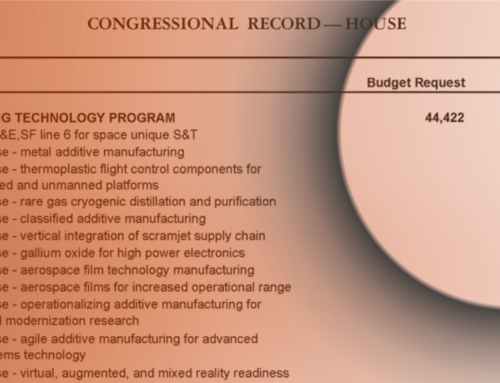The final version of the Fiscal Year 2019 Pentagon spending bill is available for your reading pleasure. Evidently, no one on the conference committee watched Schoolhouse Rock back in the day, because they have a funny way of hammering out the differences between their respective bills. Meaning that when we perused the procurement portion of the bill, instead of meeting in the middle on most of the increases lawmakers picked the greater amount.
Where Did Congress Add Money?
In this analysis of Congressional additions made to procurement programs, we included any program where Congress pumped in more cash than requested by the president (including completely unrequested programs). Not surprisingly, the House and Senate came up with very different lists of programs. For instance, all but two of the eight suggested increases to shipbuilding programs were made by the Senate. And of the other two, the Littoral Combat Ship (LCS) received suggested increases in both.
Of the 68 procurement programs that received increases in the final Pentagon spending bill, 57 of them were funded in either the House or Senate bill but received zero increase in the other chamber. Put another way, only 11 of the program lines were deemed worthy to receive increases by both the House and Senate. In fact, there were fewer programs to receive the imprimatur of both the House and Senate because four of those procurement lines relate to a single weapon system: the F-35. And do we need to remind anyone reading this that the F-35 is produced by Lockheed Martin in Defense Appropriations Subcommittee Chair Kay Granger’s (R-TX) district? No? We didn’t think so.
Of the 57 programs that received funding in only one version of the bill, how many do you suppose went unfunded in the final bill? Anyone? Buehler? Just eight. And of the 49 programs that received a zero in one chamber and some level of funding in the other, in all but four cases (OHIO Submarine replacement, LPD 17, O/A-X Light Attack Aircraft, and C-130H modernization) the “compromise” between zero and some level of funding was to give the entire amount one chamber included. For instance, the House added $740 million for eight additional F-35s for the Air Force. The Senate bill added zero. The “compromise” was $740 million. Keep that in mind the next time you’re negotiating to purchase something. And hope you’re not negotiating with Rep. Granger!
A few final numbers for you to think about: the House version of the bill added $5.6 billion to procurement programs. The Senate added more than $6.2 billion. The “compromise?” $7.5 billion.
And a program labeled “Information Systems Security: Sharkseer” received $5 million in the House and zero in the Senate. The “compromise” number in the final version of the bill was $10 million.
Somebody needs to ‘splain to the Congressional Appropriations Committees what compromise actually means.
Further Analysis of House and Senate Actions to Date
In addition, check out our “Zero to Hero” charts that listed every program that had a budget request of zero, but the Congress chose to fund in either the House and Senate versions of the Pentagon spending bill.
Also here’s our analysis of how much of the overall increases (to both unrequested and requested programs) made by the House were to benefit the Lockheed Martin Corporation versus the additions in the Senate. Remember, the Chair of the Defense Subcommittee of the House Appropriations Committee, Rep. Kay Granger (R-TX) has a major Lockheed Martin facility in her Fort Worth-based Congressional District.














Get Social